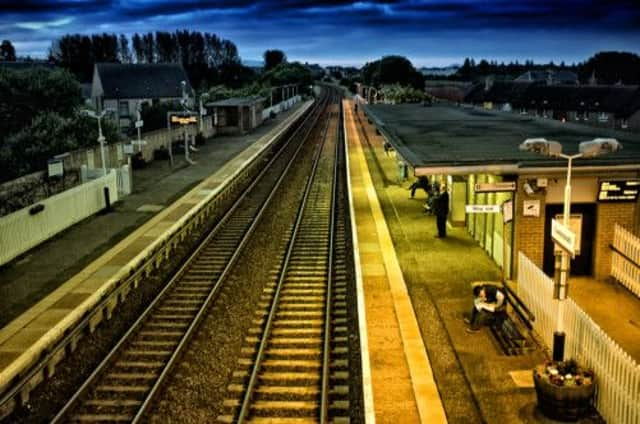100 Weeks of Scotland: train stations


Week Forty Two
These were places that I actually walked past in normal life, or rather was driven past in the back seat of my dad’s powder blue Vauxhall Cavalier. I remember clearly the first time I ever went inside Perth Station. The frontage was so small, nondescript and under whelming (it still is) that I imagined the station would be tiny. Little did I expect the vast and sprawling complex of tracks and platforms.
And then there was an early childhood visit to Edinburgh Waverley for a train to Glasgow, the excitement of which was almost too much to bear. What I remember most though was the departure board – the utter mystery and glamour of Leeds, Newcastle, London, Bristol, Manchester and Liverpool. These were names from the football scores on the TV. On that first journey I had to settle for Larbert and Polmont, but it was enough.
Advertisement
Hide AdAdvertisement
Hide AdEver since then I have loved stations. There is still a romance to them missing from the great sterile people processors that airports have become. I wanted to photograph railway stations for some time and decided to avoid the larger metropolitan ones in favour of the smaller stations that have changed little over the years, but still retain that aura of travel.
My first image is the remarkable Rannoch Station, set amidst the remote vastness of Rannoch moor. Here is a train stop that is testament to the opening up of the Scottish Highlands to the guns and gundogs of the rich and powerful of the Victorian era. This is a view from the end of the platform, looking due north to great hunting estates and mountains of the Central Highlands.
Images two and three are a night shot from Cowdenbeath and the station at Ladybank. Ladybank, as well as being a working station, also houses artists’ studios and an exhibition space in a perfect example of how smaller, rural stations are reinventing themselves.
And finally, Melrose station. It is hard to believe that this station was decommissioned permanently on the 6th of January 1969, a month short of its 120th birthday. It remains in such good shape thanks largely to the work of the Waverley Railway Company who have restored what was left of the station. Walking up and down the old platform on a rainy summer’s morning it is hard to believe that nearly 50 years have passed since a train last stopped here. Hope may yet be on the horizon for this lovely old line as the new Borders railway will terminate only a mile and a half away at Tweedbank and there is renewed hope that one day a branch line can be built to bring the station back to life.
• Alan McCredie began the ‘100 weeks of Scotland’ website in October last year, and it will conclude in Autumn 2014. McCredie’s goal is to chronicle two years of Scottish life in the run-up to the independence referendum.
McCredie says ‘one hundred weeks...’ is intended to show all sides of the country over the next two years. On the site, he says: “Whatever the result of the vote Scotland will be a different country afterward. These images will show a snapshot of the country in the run up to the referendum.
“The photos will be of all aspects of Scottish culture - politics, art, social issues, sport and anything else that catches the eye.”
Watch our slideshow of some of the photos from ‘one hundred weeks of scotland’ above, and follow the project at www.100weeksofscotland.com. You can also follow Alan on Twitter.
All pictures (c) Alan McCredie/ 100 weeks of Scotland